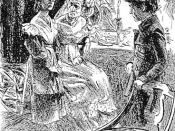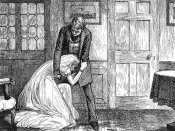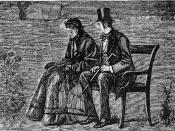"Great Expectations" was first published as a weekly series in 1860 and as a novel in 1861. Early critics had mixed reviews, disliking Dickens' tendency to exaggerate both plot and characters, but readers were so enthusiastic that the 1861 edition required five printings.
The period the novel was written in was a time of great change. England was expanding worldwide and becoming a wealthy super power. The story, while set in the early part of the 1800s, was written in 1860 during the Victorian era that began with the coronation of Queen Victoria in 1837 and lasted until her death in 1901. Virtues emphasized at that time included integrity, respectability, a sense of public duty, and maintaining a close-knit family - which are all ingredients dealt with in this novel.
At the beginning of the novel 'Great Expectations' Pip was portrayed by Dickens as a decent, virtuous young boy. He was obedient and well brought-up by his sister Mrs.
Joe Gargery and her husband Mr. Joe Gargery the blacksmith.
The first experience Pip had of snobbery was his visit to Miss Havisham's house, where he was caught up in a social experiment conducted by Miss Havisham.
'He calls the knaves, Jacks this boy!'
I believe the card game Pip lost to Estella to be a metaphor for 19th Century social hierarchy. For instance the highest valued card was a King, followed by a Queen, then by a Jack.
Pip then starts to see himself through Estella's eyes;
'Her contempt was so strong, that it became infectious, and I caught it.'
This shows us that immediately Pip gets contaminated by Estella's snobbery. He internalises her contempt for him, and starts to think of himself in the same way Estella did, thus proving that snobbery is an infectious social disease.


